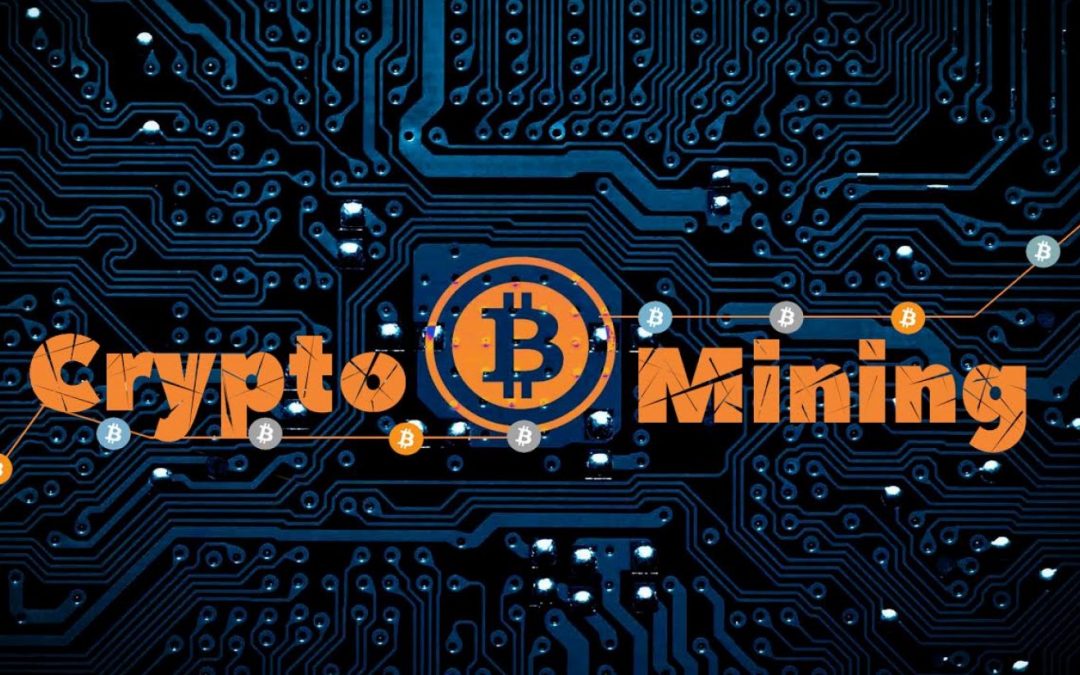Contents
Even although Congress passed a $seven hundred billion bailout package in the course of the world monetary crisis, some estimates point out that the U.S. spent, lent, or guaranteed up to $12.eight trillion to rescue the economic system. While that a lot cash might not have been spent immediately, the government basically supplied itself as a backstop to dozens of banks thought of important to the U.S. financial system and economy. Global regulators additionally implemented reforms, with the majority of new rules focused on too-massive-to-fail banks. Global financial institution laws are primarily carried out by the Basel Committee on Banking Supervision, the Bank for International Settlements and the Financial Stability Board.
JP Morgan Chase reported a 68% decline in mortgage originations in Q1 of only $17.0 billion worth of mortgages were issued, compared to $52.7 billion in the same period a year ago. The story is the same at Citigroup where mortgage originations declined 71%. This could only mean that prices are rocketing without much demand from people who buy homes to live. What one may conclude is that prices are rising due to none other than institutional investors and self-deceiving market participants. The International Association of Insurance Supervisors has also asked all member countries to have a regulatory framework to deal with Domestic-SIIs. As opposed to the G-SIB framework, D-SIB framework is based on the assessment conducted by the national authorities, who are best placed to evaluate the impact of failure on the local financial system and the local economy.
They became subject to the equivalent of a financial institution run in 2007 and 2008, by which buyers withdrew sources of financing from the shadow system. In addition, the government offered bailout funds through the Troubled Asset Relief Program in 2008. Prior to the Great Depression, U.S. client bank deposits weren’t guaranteed by the federal government, growing the danger of a financial institution run, by which a lot of depositors withdraw their deposits on the same time. While most people think of mutual fund houses as institutions that buy shares of publicly listed companies they also happen to buy bonds and commercial papers so long as the fund managers believe CPs offer better avenues for generating higher returns.
One way forward is to forget about the international harmonisation and unification of banking regulation and to leave every country to formulate its own regulation. This is what happened after the collapse of the Bretton Woods system of fixed exchange rates when countries were allowed to choose the exchange rate system they deemed appropriate for their economies. After all, the global financial https://1investing.in/ crisis has taught us big lessons on financial regulation. The BIS and Basel Committee could still provide a forum for regulators to consult and exchange views. The book is interesting to read as it prescribes that we must return to and embrace the principle of capitalism that a failing firm must vanish with no life support offered by the government and financed by the taxpayer’s money.
Anticipated bailouts encourage a moral hazard by allowing not only promoters but also other stakeholders to take higher-than-recommended risks in financial transactions. This happens because they start counting on a bailout when things go wrong. The capitulation was complete but it wasn’t very apparent to the general public as to why the stock took a beating. On the face of it, it seemed like all of this was a massive misunderstanding. The management team at DSP stated that the sale was a purely routine exercise to raise some extra cash and that DSP still held DHFL papers in bulk.
- While regular banks take deposits from people and cover a wide gamut of responsibilities including providing payment and settlement systems, savings accounts, cheques, credit lines etc.
- Bond issues, loans, payment processing and other financial services are handled across multiple banks.
- You could get your hands on one of these if you were determined enough to push through.
- Federal Deposit Insurance Corp., which has the power to take over and liquidate failing banks.
The fund managers also make another tacit assumption in that the amount will be paid back. If the fund Manager were to grow suspicious of the borrower’s ability to repay, all too big to fail meaning funding stops. DHFL borrows funds with short repayment periods by issuing a contract note. Once the repayment period is complete and the CP is due to mature i.e. expire.
Market Cap Distribution
The Financial Services Roundtable, a large- bank lobby group, has circulated two e-mails insisting that the critics’ arguments are based entirely on myths. HDFC Bank’s additional CET1 equity requirement will be 0.15 per cent for the next financial year, which will further increase to 0.20 per cent from April 1, 2019. According to analysts, too big to fail is a phrase used to describe a bank or company that’s so entwined in the economy that its failure would be catastrophic. In a two-step process, RBI first creates a sample of banks to be assessed for their systemic importance which mostly excludes smaller banks of low systematic importance. Every year in August, the RBI has to disclose the names of banks designated as D-SIBs and place these banks in appropriate buckets depending upon their Systemic Importance Scores. During the Nineteen Twenties, earlier than the Black Tuesday crash of 1929, a median of about 70 banks had failed every year nationwide.
The bailouts of 2008 weren’t simply in regards to the government shopping for shares, but in addition about altering the face of banking. An example of what could occur may be seen within the financial institution failure data during and after the 2008 Financial Crisis. During the monetary disaster, the largest bank failure in U.S. historical past occurred when Washington Mutual, with $307 billion in property, closed its doors.

There will be higher level of supervision of banks classified as D-SIBs. Further more, these D-SIBs need to maintain additional common equity tier 1 capital surcharge. The additional CET1 requirement will be in addition to the capital conservation buffer.
Well depending on who you ask, this could be a minor blip that ought to last another couple weeks or this could potentially be the moment of reckoning for everybody in the industry. Its quite likely that growth will stay muted, in a scenario where institutions are conservative with their cash and profitability of such banking firms is probably going to take a hit as borrowing becomes more expensive. One feature that has been consistent, however, is the conspiracy theories – “All NBFCs have stopped lending” ” We are all going back to the stone age” ” This is a devious plan by the Congress and Rahul Gandhi.” It continues to believe that the current predicament does not warrant any further action and it is quite content to sit back and watch. Between the government and the RBI, retail investors seem to be caught between a rock and a hard place.
Popular In Markets
If the FDIC has already taken over, your cash is not held by the weak and failing financial institution. Both insured and uninsured deposits that had been directly held at The First State Bank have been transferred to MVB Bank. Thus, even depositors who had over the insurance coverage limits had no loss on this failure. Investors were also picking apart the finances of NBFCs, including DHFL and the numbers suddenly didn’t look all that rosy.
Wells was on top of the big six, the most valuable and the sole member of the group pulling in more than $20 billion. Though its earnings were later derailed over revelations of consumer abuses, analysts see it nearing that level again in 2023. Analyst estimates show the six banks are quickly closing in on that feat — $1 trillion in a 10-year period — and that if they don’t reach the milestone at the end of this month, they will sometime in the first few weeks of 2023. It isn’t just the scale of profit that’s so startling, though, but the industry’s ability to push through scandals and thrive anew.

“Too big to fail” was a term given to banks in the 21st century, because of their sheer size, market dominance and global reach. The failure of any such bank which was truly ‘too big to fail’ would mean that it would send shock waves through the global financial system. Large financial institutions in countries such as Greece, Italy and France pose a systemic risk to their governments – and perhaps to the euro area, as well. When I talk to executives at multinational companies, they stress the need to buy financial services from a number of providers. It wouldn’t be good business practice, they say, to rely too much on one megabank.
What are Domestic Systematically Important Banks (D-SIBs)?
Another massive financial institution failure had occurred just a few months earlier when IndyMac was seized. When a financial entity like a bank becomes systemically so important that their failure is expected to disrupt the financial/banking system and the economy as a whole then that entity is termed as ‘too big to fail’. Disappointingly, regulation in the US and the rest of the world is still far detached from reality. The very banks that were at the root of the last crisis are now much larger than they were back then. In fact, the six largest banks in the US, like JPMorgan Chase, Bank of America, Citigroup, Wells Fargo, Goldman Sachs and Morgan Stanley have collectively become 37% larger since 2008. Meanwhile, 1,400 smaller banks have gone out of business and only one new bank has been started in the US in the last three years.

This, by all accounts, was a statement of intent – it trusted DHFL to pay back its debts. The credit rating agencies had reaffirmed the AAA rating on the commercial papers and the DHFL management had made no qualms about their ability to repay all their obligations and still be left with more cash. Inflation targeting refers tothe government setting certain targets for future price rise in the economyand hence designs policy in order to to meet those targets. This policy tool hasgained a lot of traction among central bankersin the past 2 decades. “This week was very tough for the Indian markets with so many events but the markets appear to have started absorbing a lot of bad news, especially surrounding the Adani Group,” said B Gopkumar, MD and CEO of Axis Securities.
HDFC in RBI’s list of ‘too big to fail’ banks: What does it mean?
The framework requires the RBI to inform about the names of the banks it has chosen as DSIBs. The financial stability board in consultation with the International Association of Insurance Supervisors and national authorities identified te Global Systematically Important Insurers. Banks that cross-jurisdictional activities and complexities and do not have any substitute or replacement are called systematically important banks. Nothing is a better indicator of the state of the market than actual mortgage originations or in other words, how many people are actually buying homes. In case a foreign bank having branch presence in India is a Global Systemically Important Bank (G-SIB), it has to maintain additional CET1 capital surcharge in India as applicable to it as a G-SIB, proportionate to its Risk Weighted Assets in India.
designated as D-SIBs and place these banks in appropriate buckets
The global financial system should additionally deal with sovereign states being too huge to fail. It was in that the BCBS finalized its framework for dealing with the D-SIB in 2014. The D-SIB framework requires the RBI to disclose the names of the banks that are to be designated as D-SIBs. From 2015 the banks were placed in various buckets based on their credit scores called systematic importance scores. CET1 is the highest quality of regulatory capital, as it absorbs losses immediately when they occur.
On September 4th 2018, IL&FS breaks the cardinal rule of the Finance Industry. The corporates and the fund houses who generously granted loans to the behemoth were stunned. The rating agencies responsible for evaluating the company’s ability to pay back its debts had rated the bonds AAA, meaning the likelihood of default was near negligible and yet IL&FS was now poised to default on thousands of crores worth of loans.
The changes mostly focus on what regulators could do without legislation, as the narrow margin Republicans hold in Congress makes it difficult to pass laws unpopular with Democrats. Trump is also naming new bank overseers who are likely to push to deregulate the financial system. The financial institution held significant participation in highly speculative oil and gas loans of Oklahoma’s Penn Square Bank.
This may happen as a result of the financial institution loses too much on its investments. Earlier in 2018, Congress modified the definition of “too big to fail” to banks with a minimum of $250 billion in belongings, reducing the listing to thirteen banks. However, if confronted with one other meltdown, it’s doubtful that the government would cease at propping up so few financial establishments.

